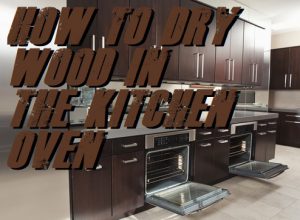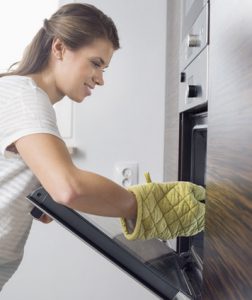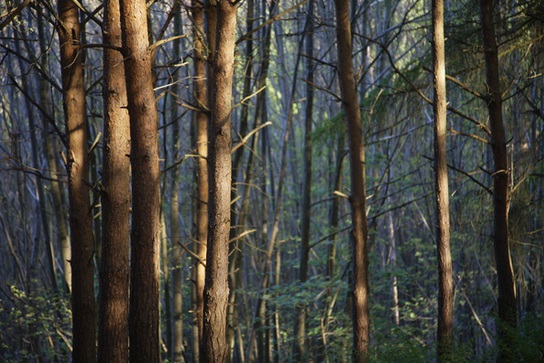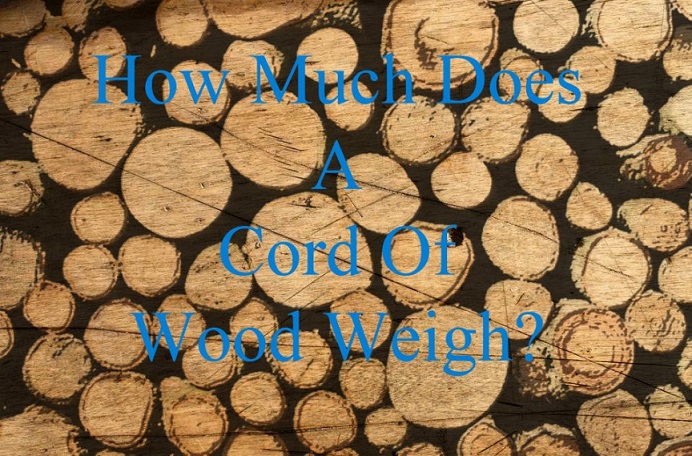I hope you love the products I've recommended below, just a heads up that as an Amazon associate, I earn from qualifying purchases. This means I may earn commissions on products bought via links on this page.
Although letting lumber to sit in a dry space is the easiest-and most inexpensive-ways to dry wood, it can be excruciatingly slow. There are times when you simply need to dry wood in a hurry and you cannot wait for weeks or months to dry your wood passively.
This is where the home kitchen oven can play an important role. But how to dry wood in an oven if you don’t own a kiln you ask?. Well, read on to find out.
Dry wood has many improved qualities over damp wood, including increased durability, strength, resistance to mold, and-of course-flammability. This is ideal for woodworkers and to be used for emergency wood for the fireplace on an unexpectedly cold night.
Even if your intention is to simply set your damp wood ablaze, it should be noted that dry lumber-with all moisture removed-burns at a higher temperature and produces far less smoke than damp wood.
So why not use the common kitchen oven to dry reasonably sized pieces of wood?
In fact, it is perfectly reasonable to use a kitchen oven this way, provided a number of steps are taken first. Actually there are a number of distinct advantages to drying wood in an oven:
Advantages Of Drying Wood In The Kitchen Oven
- The wood can be dried quickly, yet evenly, vastly reducing any moisture gradient between the edges and the core.
- This process avoids any drying defects that may occur with other-uneven-drying methods.
- This technique quickly prevents the conditions for mold to form.
- It helps by killing pests and eggs that may be embedded within the wood.
- It is vastly quicker, often speeding up the drying process from weeks (or even months) to an hour or two.
Using a normal oven for the task, this drying method requires care and attention to detail, particularly towards safety as a lot of heat is used, and wood can potentially burn inside the oven. So it is important you monitor the wood as it dries out in the oven. Don’t just leave it in there and hope for the best.
If the desire is to dry pieces of wood that are valued for decorative or functional use, it is recommended that a few sample pieces are used first-to ensure that no unexpected and unintended surprises may result.
It’s also worth noting that if you have existing air dried timber outdoors, you can bring it inside the house and store it away for a month. Somewhere like the attic is fine. After a month the moisture content will match the environment inside the home which is ideal for woodworking.
How To Dry Your Timber In The Oven
Step #1-Prepare the Oven:
- Prepare the racks to fit the pieces of wood with plenty of space for air to move.
- Preheat the oven to between 200 and 225 degrees F (95 to 110 degrees Celsius).
- Turn on the convection fan (if your oven has one).
- Check the temperature. This should happen after 15 minutes have passed.
Step #2-Load the Wood:
- Set each piece of wood on the rack so that no pieces are touching. For drying firewood, they can be stacked so that minimal touching occurs and maximum air circulation is achieved. If your wood is slightly too large and you are drying it for burning purposes, use a firewood splitter or a timber splitting axe to portion the logs into smaller sizes.
- Ensure that no small pieces may fall through the spaces on the rack. Placing small items perpendicular to the rack grid may help.
- Place a tray with a layer of water in the bottom for humidity to equalize the moisture content in the wood.
Step #3-Drying Process:
- Let the wood dry for about an hour. Be sure to check on the wood in 10-minute intervals. Larger sized wood may take longer than smaller bits.
- Remove a few sample pieces of wood (using oven mitts or other protection).
- Inspect the wood to see signs of moisture. If available, use a special moisture meter to ensure the wood is dry.
- If moisture is still clearly present, return the wood to the oven and continue for 15 minutes longer, retesting again if needed.
Step #4-Setting the Wood to Cool and Dry:
- Remove each piece of wood using oven mitts.
- Place in a dry, protected space to cool down. Watch to ensure the hot wood does not catch fire.
- After wood has cooled, check again for moisture. If moisture remains, repeat Steps 1-3 until satisfied.
This process can save a massive amount of time over-drying wood naturally, conventional sense. Of course, the more wood that is required to dry, the more time is needed. If a very large quantity of wood requires heating, it is advised to seek out an industrial kiln for the process.
Remember Safety Comes First
Although it may seem obvious, the following warnings should be mentioned:
- Take care in removing hot, cooked wood from the oven. Use oven mitts or heavy (preferably leather) work gloves.
- If smoke is seen, immediately turn off the oven. Keep the oven door closed and keep an eye out for any flames that might form.
- If flames are seen, immediately turn off the oven. Keep the oven door closed and allow the fire to burn out on its own. If the fire does not cease, evacuate the house and call 911. If the fire ceases, wait for 20 minutes, open all of the windows and then open the door of the oven.
If safety is a big concern, an alternative method may be used to dry the wood. Simply turn off the oven after the preheating step, place the wood and let dry for a couple of hours. Once an oven has been heated, it tends to be a very arid environment. A few flashes of heat, in-between, could also assist with the drying process.
That Is How To Quickly Dry Wood Using The Household Oven
The common kitchen item can transform into a useful tool to quickly dry wood. This can save a great deal of time-if done properly-providing excellent results. As well as the initial cost of buying a kiln.
Of course, there are only limited applications for this approach. If the wood is too large, alternate methods may need to be found. Otherwise, the traditional method of air-drying wood is still a valid approach.
Dry wood tends to be useful wood after all!
Why Does Your Wood Need To Be Dried?
For some people, this isn’t even a question, but I’m finding that there is a lot of new people using firewood to heat their homes. So this is for new people and who knows you might learn something new, even if you’re an expert.
There are a lot of reasons why you need to dry your wood, but to me, there is no greater reason then for burning (sorry wood workers!). If you’re relying on wood to heat your home, you want to do it in the most efficient way. This is without a doubt with dry wood.
If you didn’t know wood can hold a lot of water, sometimes the water will actually weigh more then the timber itself which is called green wood. This makes it pretty much worthless to someone who wants to use it to burn, so that is why drying is so important.
Dry wood will burn a lot longer and higher then damp wood, so that makes it the best option for people like us. This will be even better if you use hard wood, if you want to find out more on the best trees for firewood click here.
If you do decide to burn with wet wood you will find that it has an increase in smoke. Not only is there an increase in smoke, but it also doesn’t produce as much heat. So to me it is an absolute last resort, or if you want to actually cool the temperature. There really isn’t a lot to it, so just try and always use dry wood for the best results.
How To Tell If Your Wood Is Dry
If you followed my guide it should be pretty easy to know that your wood is dry, but there are a few other things you can do to know for sure. Often the simplest way to tell is the color and weight of the wood. It will be a lighter color and weigh a lot less, water weighs a lot!
The wood itself is a good tell sign and can generally tell you everything you need to know. Tho depending on the wood you may or may not see cracks in the grain at the ends of the wood. But since this may not occur for all woods, I’m not a big fan of it.
If you were drying wood outside and not using an oven, like in this guide. You can check the ends and feel them, and if they feel warm then they’re dry. This is a little harder to test when you use an oven, so not really applicable here.
One good way of seeing if the wood is dry is get two pieces, and clapping them together. If the sounds are more dull then the wood is still wet, but if it’s a more hollow sound then it’s dry.
Something else you can try but really only works if you have had a fire going, and you have some coals still going. Which requires you to throw a piece of the wood into the coals, and if there is more of a sizzling sound the wood is wet. So hopefully these small tips have helped you in some way.
My Final Thoughts
Hopefully you were able to learn something from this guide, even if it was just a refresher. While using an oven to dry your wood is possible and worth doing, it is more cost effective drying wood the old fashioned way. If cost isn’t your main concern, I say go for it! Making life easier on yourself is always a good thing, which will leave you with more time to do things you want.







2 thoughts on “How To Dry Wood In An Oven – A Practical DIY Guide”
I want to put air dried lumber with an already low moisture content in the oven to make sure any possible insects are killed before using. Does the method above still apply?
If you do decide to burn with wet wood you will find that it has an increase in smoke. Not only is there an increase in smoke, but it also doesn’t produce as much heat. So to me it is an absolute last resort, or if you want to actually cool the temperature.
I don’t think that is correct. I don’t think anyone has said “It’s too hot in here. Lets light a fire to cool it down”. Adding heat to heat (however low it is) will just produce more heat.